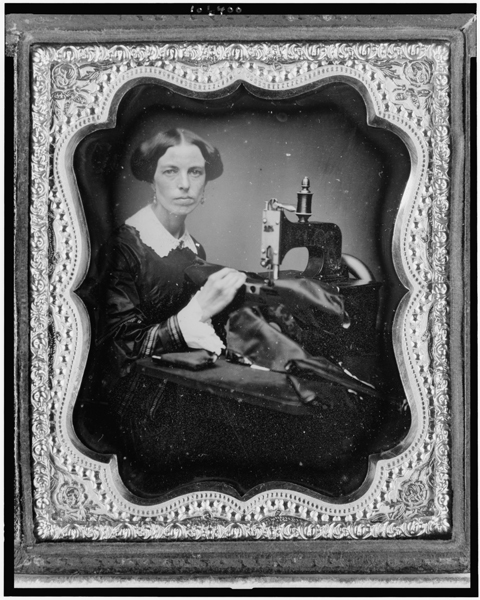Working Women: The Needle Trades
Annotation
We can look at 19th-century dresses and other elements of women's costume as the products of the working people who produced them. Women of most classes used needle and thread to make and mend household textiles and clothing. Many women made modest incomes as semi-skilled seamstresses, doing ordinary sewing for other households. A small number developed fine skills at design, cutting, and fitting of ladies' dresses, so they could create stylish outfits for the fashionable ladies of their towns and cities. Elizabeth Keckley, who produced most of Mrs. Lincoln's dresses in the early 1860s, was among the elite of her profession. She called herself a "modiste," a designer of dresses as well as needlewoman. At the height of her career, in the mid-1860s, she ran a workshop that employed about 20 other women in Washington, D.C. This image is of an unknown woman at a sewing machine around 1853.

Source
"Occupational portrait of unknown woman at a sewing machine," Library of Congress, Prints and Photographs Division, Reproduction Number LC-USZ62-110212.